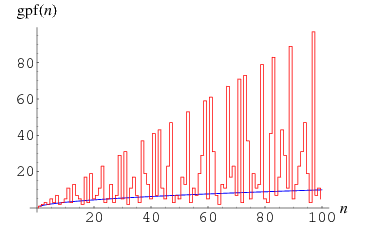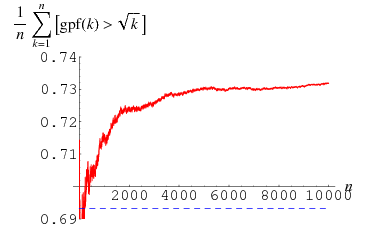

تاريخ الرياضيات

الاعداد و نظريتها

تاريخ التحليل

تار يخ الجبر

الهندسة و التبلوجي


الرياضيات في الحضارات المختلفة

العربية

اليونانية

البابلية

الصينية

المايا

المصرية

الهندية


الرياضيات المتقطعة

المنطق

اسس الرياضيات

فلسفة الرياضيات

مواضيع عامة في المنطق


الجبر

الجبر الخطي

الجبر المجرد

الجبر البولياني

مواضيع عامة في الجبر

الضبابية

نظرية المجموعات

نظرية الزمر

نظرية الحلقات والحقول

نظرية الاعداد

نظرية الفئات

حساب المتجهات

المتتاليات-المتسلسلات

المصفوفات و نظريتها

المثلثات


الهندسة

الهندسة المستوية

الهندسة غير المستوية

مواضيع عامة في الهندسة

التفاضل و التكامل


المعادلات التفاضلية و التكاملية

معادلات تفاضلية

معادلات تكاملية

مواضيع عامة في المعادلات


التحليل

التحليل العددي

التحليل العقدي

التحليل الدالي

مواضيع عامة في التحليل

التحليل الحقيقي

التبلوجيا

نظرية الالعاب

الاحتمالات و الاحصاء

نظرية التحكم

بحوث العمليات

نظرية الكم

الشفرات

الرياضيات التطبيقية

نظريات ومبرهنات


علماء الرياضيات

500AD

500-1499

1000to1499

1500to1599

1600to1649

1650to1699

1700to1749

1750to1779

1780to1799

1800to1819

1820to1829

1830to1839

1840to1849

1850to1859

1860to1864

1865to1869

1870to1874

1875to1879

1880to1884

1885to1889

1890to1894

1895to1899

1900to1904

1905to1909

1910to1914

1915to1919

1920to1924

1925to1929

1930to1939

1940to the present

علماء الرياضيات

الرياضيات في العلوم الاخرى

بحوث و اطاريح جامعية

هل تعلم

طرائق التدريس

الرياضيات العامة

نظرية البيان
Greatest Prime Factor
المؤلف:
Greene, D. H. and Knuth, D. E.
المصدر:
Mathematics for the Analysis of Algorithms, 3rd ed. Boston, MA: Birkhäuser, 1990.
الجزء والصفحة:
...
13-9-2020
2331

For an integer  , let
, let  denote the greatest prime factor of
denote the greatest prime factor of  , i.e., the number
, i.e., the number  in the factorization
in the factorization
 |
with  for
for  . For
. For  , 3, ..., the first few are 2, 3, 2, 5, 3, 7, 2, 3, 5, 11, 3, 13, 7, 5, ... (OEIS A006530). The greatest multiple prime factors for squareful integers are 2, 2, 3, 2, 2, 3, 2, 2, 5, 3, 2, 2, 3, ... (OEIS A046028).
, 3, ..., the first few are 2, 3, 2, 5, 3, 7, 2, 3, 5, 11, 3, 13, 7, 5, ... (OEIS A006530). The greatest multiple prime factors for squareful integers are 2, 2, 3, 2, 2, 3, 2, 2, 5, 3, 2, 2, 3, ... (OEIS A046028).

A number for which  is called an unusual number by Greene and Knuth (1990) and a
is called an unusual number by Greene and Knuth (1990) and a  -rough numbers by Finch (2001). The first few
-rough numbers by Finch (2001). The first few  -rough numbers are 2, 3, 5, 6, 7, 10, 11, 13, 14, 15, 17, 19, 20, 21, ... (OEIS A064052). The probability that a random positive integer is
-rough numbers are 2, 3, 5, 6, 7, 10, 11, 13, 14, 15, 17, 19, 20, 21, ... (OEIS A064052). The probability that a random positive integer is  -rough is
-rough is  (Schroeppel 1972).
(Schroeppel 1972).
A number that is not  -rough is called, not surprisingly, a
-rough is called, not surprisingly, a  -smooth number (or sometimes, a "round number"). The first few are 1, 4, 8, 9, 12, 16, 18, 24, 25, 27, ... (OEIS A048098).
-smooth number (or sometimes, a "round number"). The first few are 1, 4, 8, 9, 12, 16, 18, 24, 25, 27, ... (OEIS A048098).
REFERENCES:
Erdős, P. and Pomerance, C. "On the Largest Prime Factors of  and
and  ." Aequationes Math. 17, 211-321, 1978.
." Aequationes Math. 17, 211-321, 1978.
Finch, S. "RE: Unusual Numbers." 27 Aug 2001. https://listserv.nodak.edu/scripts/wa.exe?A2=ind0108&L=nmbrthry&P=963.
Greene, D. H. and Knuth, D. E. Mathematics for the Analysis of Algorithms, 3rd ed. Boston, MA: Birkhäuser, 1990.
Guy, R. K. "The Largest Prime Factor of  ." §B46 in Unsolved Problems in Number Theory, 2nd ed. New York: Springer-Verlag, p. 101, 1994.
." §B46 in Unsolved Problems in Number Theory, 2nd ed. New York: Springer-Verlag, p. 101, 1994.
Heath-Brown, D. R. "The Largest Prime Factor of the Integers in an Interval." Sci. China Ser. A 39, 449-476, 1996.
Mahler, K. "On the Greatest Prime Factor of  ." Nieuw Arch. Wisk. 1, 113-122, 1953.
." Nieuw Arch. Wisk. 1, 113-122, 1953.
Schroeppel, R. Item 29 in Beeler, M.; Gosper, R. W.; and Schroeppel, R. HAKMEM. Cambridge, MA: MIT Artificial Intelligence Laboratory, Memo AIM-239, p. 13, Feb. 1972. https://www.inwap.com/pdp10/hbaker/hakmem/number.html#item29.
Sloane, N. J. A. Sequences A006530/M0428, A048098, and A064052 in "The On-Line Encyclopedia of Integer Sequences."